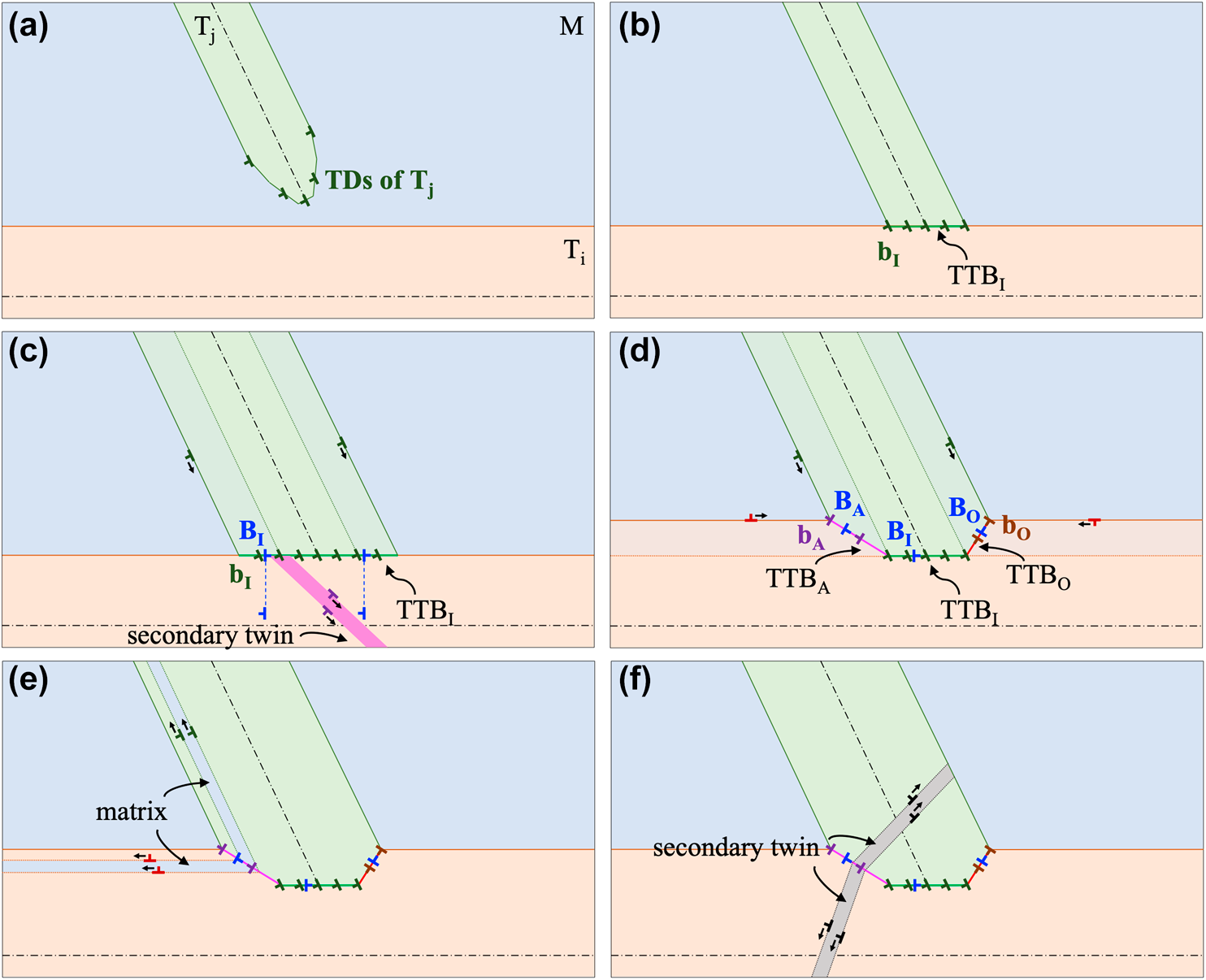Article contents
Atomic-level study of twin–twin interactions in hexagonal metals
Published online by Cambridge University Press: 14 April 2020
Abstract

Twin–twin interactions (TTIs) take place when multiple twinning modes and/or twin variants are activated and interact with each other. Twin–twin junctions (TTJs) form and affect subsequent twinning/detwinning and dislocation slip, which is particularly important in determining mechanical behavior of hexagonal metals because twinning is one major deformation mode. Atomic-level study, including crystallographic analysis, transmission electronic microscopy (TEM), and molecular dynamics (MD) simulations, can provide insights into understanding the process of TTIs and structural characters associated with TTJs. Crystallographic analysis enables the classification of TTIs and the prediction of possible interfaces of twin–twin boundaries (TTBs), characters of boundary dislocations, and possible reactions of twinning dislocations and lattice dislocations at TTBs. MD simulations can explore the process of TTIs, microstructures of TTJs, atomic structures of TTBs, and stress fields associated with TTJs. The predictions based on crystallographic analysis and the findings from MD can be partially verified by TEM. More importantly, these results provide explanation for microstructural characters of TTJs and guidance for further TEM characterizations.
Keywords
- Type
- Invited Feature Paper
- Information
- Journal of Materials Research , Volume 35 , Issue 13: Focus Section: Interactions of Shear Transformation Bands , 14 July 2020 , pp. 1647 - 1659
- Copyright
- Copyright © Materials Research Society 2020
Footnotes
This paper has been selected as an Invited Feature Paper.
References
- 9
- Cited by



